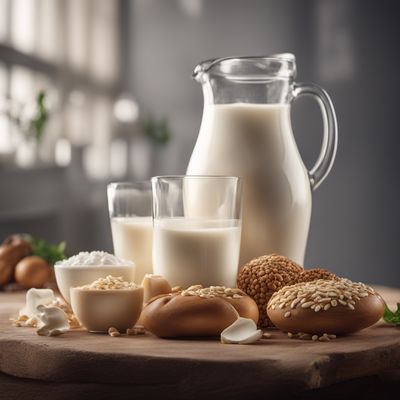
Ingredient
Elk milk
The Nutritional Elixir: Unveiling the Wonders of Elk Milk
Elk milk is a creamy and rich dairy product that is obtained from the lactation of female elk. It has a slightly sweet and nutty flavor with a smooth and velvety texture. The milk is known for its pale yellow color and is often compared to cow's milk in terms of consistency. It contains a higher fat content than cow's milk, giving it a luxurious mouthfeel and making it an excellent choice for creating indulgent desserts and creamy sauces.
Origins and history
Elk milk has a long history of consumption among indigenous communities in certain regions of North America and Europe. These communities have recognized the nutritional value of elk milk for centuries and have utilized it as a source of sustenance. In recent years, elk milk has gained attention in the culinary world for its unique flavor and potential health benefits.
Nutritional information
Elk milk is a nutrient-dense ingredient, rich in protein, calcium, and essential vitamins and minerals. It is lower in lactose compared to cow's milk, making it a suitable option for individuals with lactose intolerance. Additionally, elk milk contains a higher fat content, providing a good source of healthy fats.
Allergens
Elk milk may trigger allergic reactions in individuals with a known allergy to dairy products. It is important to exercise caution and consult with a healthcare professional if you have any concerns or allergies.
How to select
When selecting elk milk, opt for reputable sources that prioritize the welfare and health of the elk. Look for milk that is fresh, free from any off-putting odors, and properly sealed to ensure its quality and safety.
Storage recommendations
Elk milk should be stored in a refrigerator at a temperature of 40°F (4°C) or below. It is best to consume it within a few days of purchase to maintain its freshness and quality.
How to produce
Elk milk production is primarily carried out by professional elk farmers who have the necessary facilities and expertise. It is not recommended for amateurs to attempt elk milk production due to the specialized knowledge and resources required.
Preparation tips
Elk milk can be used as a substitute for cow's milk in various recipes, such as smoothies, baked goods, and creamy soups. It can also be enjoyed on its own as a refreshing beverage. When using elk milk in recipes, keep in mind its higher fat content and adjust accordingly. Be cautious not to overheat the milk, as it may affect its texture and flavor.
Culinary uses
Elk milk can be used in a wide range of culinary applications, including making ice cream, custards, puddings, and cheese. Its rich and creamy texture adds depth and complexity to dishes, making it a versatile ingredient in both sweet and savory recipes.
Availability
Elk milk is primarily available in regions where elk farming is practiced, such as certain parts of North America and Europe. It may also be found in specialty stores or online retailers that cater to unique and exotic food products.

